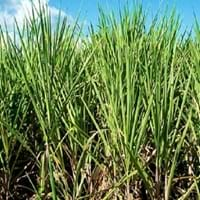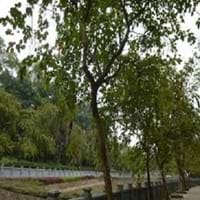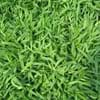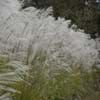Life Span
Perennial
Biennial
Origin
Southeastern Asia, Melanesia, Micronesia
South-Eastern Asia, Southeastern Asia, China
Types
Not Available
Purple Orchid Tree, White Orchid Tree, Bidi leaf tree
Number of Varieties
Not Available
Habitat
agricultural areas, Wet lands
Forests, Mountain Slopes, Valley
USDA Hardiness Zone
10-15
9-13
AHS Heat Zone
12 - 9
12-9
Sunset Zone
H1, H2, 8, 9, 20, 21, 22, 23, 24
H1, H2, 9, 10, 11, 13, 18, 19, 20, 21, 22, 23
Habit
Clump-Forming
Upright/Erect
Flower Color
White hair and some brown spots on margins and at tips
Light Pink, Magenta, Violet
Flower Color Modifier
Bicolor
Bicolor
Fruit Color
Not Available
Green, Sandy Brown
Leaf Color in Spring
Green
Green, Gray Green
Leaf Color in Summer
Light Green
Green, Gray Green
Leaf Color in Fall
Green
Green, Gray Green, Yellow green
Leaf Color in Winter
Green
Green, Gray Green, Yellow green
Leaf Shape
Acicular
Butterfly shaped
Plant Season
Summer, Fall
Spring, Summer
Sunlight
Full Sun
Full Sun, Partial Sun
Growth Rate
Very Fast
Fast
Type of Soil
Clay, Loam, Sand
Clay, Loam, Sand
The pH of Soil
Acidic, Neutral, Alkaline
Acidic, Neutral
Soil Drainage
Average
Well drained
Bloom Time
Early Summer, Summer, Late Summer, Early Fall
Early Spring, Spring
Tolerances
Wet Site, Drought
Drought
Where to Plant?
Ground
Ground
How to Plant?
Seedlings, Stem Cutting
Budding, Grafting, Seedlings
Plant Maintenance
High
Medium
Watering Requirements
Water Deeply
Average Water Needs, Keep the ground moist but not water-logged, Water Deeply
In Summer
Lots of watering
Lots of watering
In Spring
Moderate
Moderate
In Winter
Average Water
Average Water
Soil pH
Acidic, Neutral, Alkaline
Acidic, Neutral
Soil Type
Clay, Loam, Sand
Clay, Loam, Sand
Soil Drainage Capacity
Average
Well drained
Sun Exposure
Full Sun
Full Sun, Partial Sun
Pruning
Prune ocassionally, Remove dead branches, Remove Ferns
Remove branches, Remove damaged leaves, Remove dead branches, Remove dead leaves, Remove dead or diseased plant parts
Fertilizers
Equal amount of N,P,K, fertilize in growing season
Apply N-P-K
Pests and Diseases
Beetles, Fusarium root rot, Head smut
Red blotch
Plant Tolerance
Heat Tolerance, Shade areas
Drought
Flower Petal Number
Single
Single
Foliage Texture
Coarse
Medium
Foliage Sheen
Matte
Matte
Attracts
Butterflies, Rats, Squirrels
Birds
Allergy
Diabetes, Sleepiness
Not Available
Aesthetic Uses
Not Available
Not Available
Beauty Benefits
Maintains teeth healthy, Making cosmetics
Not Available
Environmental Uses
Food for animals, Food for birds
Air purification, Nesting sites for birds, Shadow Tree
Medicinal Uses
Aging, Antidepressant, Aphrodisiac, Appetite enhancer, Diuretic, Fatigue, Muscle Pain, Nutrients
Carminative, Laxative
Part of Plant Used
Leaf Stalks, Leaves, Stem
Buds, Flowers, Leaves, Root, Seeds, Stem
Other Uses
Animal Feed, Biomass for fuel, Can be made into a herbal tea, Food for animals, Sometimes used for making wine
Fibre, Gum, Used as a dye
Used As Indoor Plant
No
No
Used As Outdoor Plant
Yes
Yes
Garden Design
Dried Flower/Everlasting, Edible, Feature Plant, Tropical
Feature Plant, Shade Trees, Street Trees, Tropical
Botanical Name
SACCHARUM officinarum
BAUHINIA purpurea
Common Name
Sugarcane
Butterfly Tree, Orchid Tree
In Hindi
गन्ना
Butterfly tree
In German
Saccharum
Schmetterlings- Baum
In French
Canne à sucre
arbre de papillon
In Spanish
Saccharum
árbol de la mariposa
In Greek
Saccharum
δέντρο πεταλούδα
In Portuguese
Cana-de-açúcar
árvore borboleta
In Polish
Saccharum
drzewo Butterfly
In Latin
Saccharum
Gloria ligno
Phylum
Magnoliophyta
Magnoliophyta
Class
Liliopsida
Magnoliopsida
Clade
Commelinids, Monocots
Angiosperms, Eudicots, Rosids
Tribe
Andropogoneae
Cercideae
Subfamily
Panicoideae
Caesalpinioideae
Importance of Sugarcane and Butterfly Tree
Want to have the most appropriate plant for your garden? You might want to know the importance of Sugarcane and Butterfly Tree. Basically, these two plants vary in many aspects. Compare Sugarcane and Butterfly Tree as they differ in many characteristics such as their life, care, benefits, facts, etc. Every gardener must at least have the slightest clue about the plants he wants to plant in his garden. Compare their benefits, which differ in many ways like facts and uses. The medicinal use of Sugarcane is Aging, Antidepressant, Aphrodisiac, Appetite enhancer, Diuretic, Fatigue, Muscle Pain and Nutrients whereas of Butterfly Tree is Carminative and Laxative. Sugarcane has beauty benefits as follows: Maintains teeth healthy and Making cosmetics while Butterfly Tree has beauty benefits as follows: Maintains teeth healthy and Making cosmetics.
Compare Facts of Sugarcane vs Butterfly Tree
How to choose the best garden plant for your garden depending upon its facts? Here garden plant comparison will help you to solve this query. Compare the facts of Sugarcane vs Butterfly Tree and know which one to choose. As garden plants have benefits and other uses, allergy is also a major drawback of plants for some people. Allergic reactions of Sugarcane are Diabetes and Sleepiness whereas of Butterfly Tree have Not Available respectively. Having a fruit bearing plant in your garden can be a plus point of your garden. Sugarcane has showy fruits and Butterfly Tree has no showy fruits. Also Sugarcane is not flowering and Butterfly Tree is not flowering . You can compare Sugarcane and Butterfly Tree facts and facts of other plants too.





